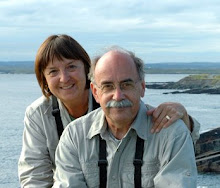With the entire group assembled, introductions were made to José and Niko as we boarded our 25-passenger Mitsubishi bus, complete with ice chest cooler and plenty of luggage storage. It would be our home on wheels for the next few weeks. There would be a few days when our bus travel seemed to last forever. Short distances on a map didn’t belie that there wasn’t a straight or level section of road to be had anywhere (save for perhaps the runway at the airport). Scenic, to be sure, but slow going.
Our tour would take us through six administrative provinces and a variety of habitats including beaches and deciduous woods near sea level, both western and eastern foothills of the Andes, arid valleys, and high Andes Páramo grasslands and lakes.
Although we had picked up a number of birds during our walkabout in Guayaquil the day before (fun keying out the Pacific Hornero) we found nothing that we wouldn’t eventually see later during the tour. Our first “official” birding stop was on the outskirts of Guayaquil at the Cerro Blanco Woodland Reserve, an area of dry semi-deciduous woodland. We took two extended hikes separated by a box lunch. Box lunches would be a regular event. Although not as appealing as a sit down lunch somewhere along the road at a café or restaurant, it saved time and allowed us to spend more time birding. They also provided fodder for many creative and interesting food reviews.
A partial list of the more notable birds include: Ecuadorian Thrush, Streaked Flycatcher, Sooty-crowned Flycatcher, Black-and-white Becard, Southern Yellow Grosbeak, Yellow-rumped Cacique, Fasciated Wren, Pale-browed Tinamou (excellent looks!), Ecuadorian Piculet, Collared Antshrike, Black-capped Sparrow, Ecuadorian Ground-Dove, Pacific Pygmy-Owl, Scarlet-backed Woodpecker, Pacific Hornero, Red-lored Parrot (flyover), Gray-cheeked Parakeet, Pacific Parrotlet, Red-billed Scythebill, Pacific Elaenia, Saffron Finch, Gray-and-gold Warbler, Ecuadorian Trogon.
A few hours up the road from Cerro Blanco we moved out of Guayas Province and into El Oro Province. En route we passed extensive wetlands picking up : Turkey and Black Vultures, Snail Kites, Savannah Hawk, Northern Crested Caracara and Harris’s Hawks. A stop at the edge of the Manlares Charute off the main road netted us: Wattled Jacana, Black-bellied Whistling Duck, Rufescent Tiger-Heron numerous Great and Snowy Egrets, Striated Heron, Peruvian Meadowlark, Chestnut-throated Seedeater, White-throated Crake (heard only), Limpkin and the real prize of the day – Horned Screamers!
It should be noted that a few days after we had left this area, heavy rains struck causing severe flooding accompanied with deaths due to drowning. Fortunately for us we managed to avoid the downpours and subsequent damages. When we drove through the area later in the tour, evidence of the damage was still very evident including waterways, ditches, fields and villages filled with rushing water.
Pushing on we needed to get to the town of Zaruma where we would spend the next few nights allowing us to explore other areas in the El Oro Province. Zaruma was established as a gold-mining town (there are still active mines in the area) in 1549 on the orders of Felipe II to try to control gold extraction. Sitting at 1170 meters and known for its beautiful wooden colonial style houses, it has twisting narrow and steep streets although we would see little of the town in daylight.
Arriving at the Hotel Roland after dark we were dismayed to discover that our rooms were located four stories down the side of a steep hill. Picturesque, yes, but it was still 80 steps down with no elevator. And it was drizzling. Since the hotel did not serve dinner we re-boarded our bus to travel to a local eatery, which barely had room for us. The name of the restaurant and food served were for the most part equally forgettable. Oh my. What had we gotten ourselves into?
Following dinner at the restaurant and over the noise of some very strange pieces of machinery (we assumed they were integral to the restaurant but no idea what they did) we logged our first day’s bird sightings into our checklists, a daily ritual which would be performed throughout the tour at the end of each day. Given the limited amount of sleep some of us suffered from, combined with the length of our travel day, we "happily" trudged down to our cubicle. Did I already mention the 80 steps? There was no hot water in our room but we were simply satisfied just to go to bed. We had to be up at 5:00 AM in order to be on the road in time to arrive at our next birding destination.
I do not recall which day it was but Naomi coined the phrase that described the pace of our tour: “Birding Boot Camp”. It was kind of starting to feel that way!



No comments:
Post a Comment